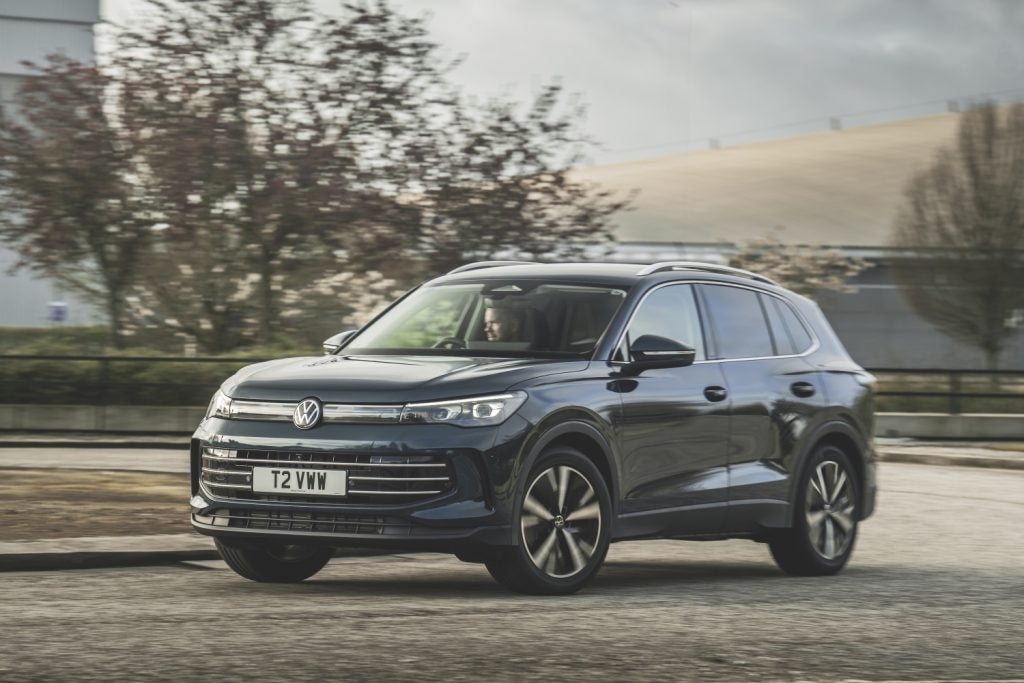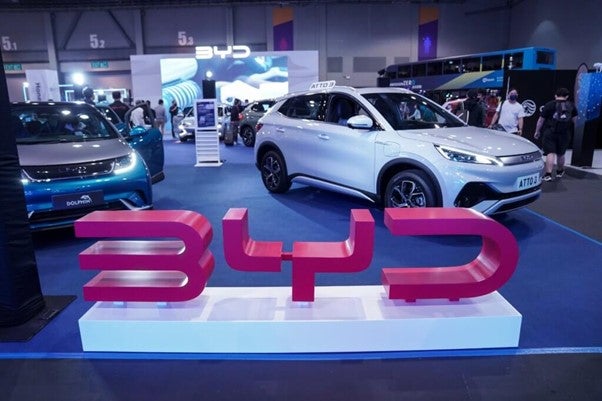 Europe’s lower medium or C-segment is the scene of intense competition this year between the latest models from a number of manufacturers, most notably Volkswagen‘s latest Golf and GM Europe’s new Astra (which has been pre-sold with incentives). The Vauxhall/Opel Astra is a vital model for GM Europe as it attempts to turn around its losses. Jesse Crosse attended the recent European media launch for the new Astra and reports on the vehicle itself.
Europe’s lower medium or C-segment is the scene of intense competition this year between the latest models from a number of manufacturers, most notably Volkswagen‘s latest Golf and GM Europe’s new Astra (which has been pre-sold with incentives). The Vauxhall/Opel Astra is a vital model for GM Europe as it attempts to turn around its losses. Jesse Crosse attended the recent European media launch for the new Astra and reports on the vehicle itself.
News that Executive Director of Design, Martin Smith, is to leave Opel and join Ford Motor Company was delivered to a stunned crop of UK journalists at 30,000 feet while en-route back from launch of the new Astra. Smith has carved out an enviable reputation for himself since he first joined Porsche after leaving the Royal College of Art in 1973 and then moved to Audi in 1977. He made his mark at Opel as director of design for compact cars soon after joining in 1997 with the Zafira-based Snowtrekker and Opel speedster concepts. The speedster later became a reality which it was hoped would provide a much-needed halo-effect for Opel and Vauxhall, but Smith’s determination to shake-up the mainstream brand was demonstrated when the Speedster’s ‘design language’ was carried over to the new Vectra and even more dramatically, the new Astra which goes on sale in the UK on May 1st.
Design
From both a design standpoint and a technical one, the fifth generation Astra moves Vauxhall/Opel’s game on a long way. While the Golf gets larger, mellower and increasingly bland as VW struggles to move on without offending existing customers, Opel designer Freidhelm Engler has been given more than enough free reign to take radical design sketches right through to the finished item. The result is hardly recognisable as an Astra but thanks to the groundwork done by the Speedster and Vectra, the new car’s brand identity is unmistakeable, its strong, balanced lines lacking any weak or unresolved areas and creating an even stronger presence on the road than was promised at the static launch last year.
The new Astra is an important car not just because it has sold two million units in the UK alone during its lifetime, but also because its design takes on the kings of cool in the industry head on. What we’re witnessing at Vauxhall/Opel echoes the renaissance of Peugeot in the early 1980s with the 205. What may have been a flash in the pan with the Speedster has grown into an all-out assault on the closed shop of designer branding that VW, Audi and Peugeot, have managed to safeguard for so long. Vauxhall/Opel inevitably lets slip that its intention is to woo younger buyers and to achieve that it has to go a long way beyond offering fashionable technology and equipment.
To truly succeed it has to convince a style-conscious audience that it can deliver looks that make it cool to drive a car wearing a Vauxhall or Opel badge. And thanks to the Astra’s low roofline, high waist and aggressive front and rear styling, it’s got a good chance of succeeding.
Chassis and body
That’s not to say the new Astra is technically backward by comparison, even if conceptually, its chassis is almost disappointingly predictable. When Ford revealed the new Focus at the Dunton Engineering Centre a few years ago, the dynamic benefits of the control blade rear suspension provided good PR mileage and when it comes to handling, has since helped to establish the Focus as a class leader. In contrast, the new Astra marries front MacPherson Struts with a familiar torsion beam design at the rear. The aim was to provide as much adaptability throughout the range and in that sense, the spring rates are matched to the front axle load in 30kg steps to accommodate a fairly wide range of petrol and diesel engines.
How well do you really know your competitors?
Access the most comprehensive Company Profiles on the market, powered by GlobalData. Save hours of research. Gain competitive edge.

Thank you!
Your download email will arrive shortly
Not ready to buy yet? Download a free sample
We are confident about the unique quality of our Company Profiles. However, we want you to make the most beneficial decision for your business, so we offer a free sample that you can download by submitting the below form
By GlobalDataSteering is by the sometimes controversial, speed-sensitive electro-hydraulic (EHPS) system with a 15:1 ratio for standard suspension setups and 14:1 for those Astras with sports suspension. In fact, buyers get a choice of three setups, standard, sport or full IDS (Interactive Driving System), the sport suspension having a 15mm lower ride height and stiffer springs. IDS, introduced for the first time on the Vectra, integrates ESP, traction control, ABS plus braking assistant and Continuous Damping Control (CDC) using a high-speed electronic network.
The Astra is the first car in this sector to use a high-speed CAN data bus for networking and the response of its ESP system in lane change tests is extremely quick, making the intervention of the system far more transparent to the driver than many others. For example, in a fairly extreme 90km/h lane change manoeuvre executed with a violent right-left movement of the steering wheel, the Astra will oversteer and need correcting when returning to the straight ahead, but the body remains well controlled and the usual ESP trademark of sudden throttle cuts and brake applications is missing. IDS-equipped cars also have a sport switch which sharpens or softens steering sensitivity, damper and throttle settings. With an automatic gearbox or the automated manual Easytronic, shift points are modified too and ESP is also available as an option independent of IDS.
Go to virtually any car launch these days and at some point the question of superior torsional body stiffness will crop up. Opel haven’t disappointed with the five-door Astra whose flexing resistance has been improved by 52 percent while the all-important torsional rigidity is up by 15 percent. The Astra’s lean frontal area gives it a competitive Cd value of 0.32 too. There are seven trim levels available in the UK and of those, the top five get full-size curtain airbags as standard, though ESP is standard only on the top spec SRi. Sensors measure the severity of any impact, though, and deploy belt pre-tensioners or airbags accordingly. Minor front and rear damage can be repaired more cheaply thanks to sectioned front and rear panels and rear lights that, like the Focus, are outside the most common impact zone.
Powertrain
It’s been in the offing for some time but the Opel Ecotec engine line-up has now become the equal of any manufacturer in the business, the Astra getting six petrol and turbo diesel engines at launch with a new 1.9 CDTi diesel due in the summer, all of which are Euro 4 compliant. Entry-level 90bhp, 125Nm, 1.4-litre and 105bhp, 150Nm, 1.6-litre engines both make use of Twinport technology. The aim of Twinport is to reduce throttling losses – one of the major reasons why a gasoline engine is less efficient than its unthrottled diesel counterpart – by running high levels of EGR. Allowing exhaust gas to be re-circulated into the cylinder at part load reduces the energy-sapping vacuum caused by the partially closed throttle.
But too much EGR can lead to unstable combustion. Twinport individually throttles one of the two intake ports on each cylinder causing an intensive swirl effect to counteract that tendency. When the driver asks for high power, the EGR is reduced and the Twinport throttles opened to their full extent. In designing the new system, Opel used both computer simulation and video footage to assess the engine characteristics and claim a fuel consumption improvement of 10 percent.
Sitting above the 1.4 and 1.6 is the 125bhp, 170Nm, 1.8-litre and above that, the 170bhp, 250Nm, 2.0-litre Turbo. In Europe there will also be a 200bhp version of the 2.0-litre Turbo but there’s a question mark as to whether that engine will come to the UK. The turbos come with a six-speed manual gearbox as standard but less clean-shifting than the 6-speed and available on the 1.4, 1.6 and 1.8 is a 5-speed manual. A conventional 4-speed auto is optional only on the 1.8-litre and Opel’s automated manual, the Easytronic, is optional on the 1.6-litre but surprisingly (it’s an economy device after all) not on the 1.4-litre. Fuel consumption across the petrol range is competitive with the 1.4 returning a combined cycle figure of 44.8mpg and 151gm/km CO2. Even the 170bhp 2.0-litre turbo still manages 31mpg and 218gm/km CO2, though the combination of turbocharger and enthusiastic driving is likely to result in much poorer off-cycle (real world) results for the high performance engine.
 The diesels are all common rail units. First up is the 80bhp, 1.7 CDTi turbo diesel engine developing 170Nm between 1800rpm and 2,800rpm. It’s followed by the 100bhp 1.7 CDTi which gains its additional power from a variable geometry turbocharger and produces 240Nm torque at 2,300rpm. Both these engines are based on the Isuzu common rail diesel, however, the new 150bhp 1.9 CDTi is derived from the Fiat JTD design and delivers 315Nm at 2,000rpm. The 1.9 will eventually be offered with a diesel particulate filter which unlike the pioneering PSA Peugeot Citroen DPF, can live without a fuel additive and therefore does not require complex and expensive re-plumbing of the car. Mindful of the goodwill value of diesel particulate filters and serving as a reminder that GM still does not have bottomless pockets, the 1.9 CDTi engine gets one as standard on the larger Vectra Estate and Signum models, where the combination of 1.9-litre engine and vehicle weight makes Euro 4 harder to attain without it. The filter will, however, be optional on 1.9 CDTi Vectra hatch and Astra models. Best fuel consumption comes from the 80bhp, 1.7 CDTi at 57.6mpg combined and 132gm/km CO2, the 1.9 CDTi returning 50.4mpg combined and 151gm/km CO2 along with an impressive 130mph top speed.
The diesels are all common rail units. First up is the 80bhp, 1.7 CDTi turbo diesel engine developing 170Nm between 1800rpm and 2,800rpm. It’s followed by the 100bhp 1.7 CDTi which gains its additional power from a variable geometry turbocharger and produces 240Nm torque at 2,300rpm. Both these engines are based on the Isuzu common rail diesel, however, the new 150bhp 1.9 CDTi is derived from the Fiat JTD design and delivers 315Nm at 2,000rpm. The 1.9 will eventually be offered with a diesel particulate filter which unlike the pioneering PSA Peugeot Citroen DPF, can live without a fuel additive and therefore does not require complex and expensive re-plumbing of the car. Mindful of the goodwill value of diesel particulate filters and serving as a reminder that GM still does not have bottomless pockets, the 1.9 CDTi engine gets one as standard on the larger Vectra Estate and Signum models, where the combination of 1.9-litre engine and vehicle weight makes Euro 4 harder to attain without it. The filter will, however, be optional on 1.9 CDTi Vectra hatch and Astra models. Best fuel consumption comes from the 80bhp, 1.7 CDTi at 57.6mpg combined and 132gm/km CO2, the 1.9 CDTi returning 50.4mpg combined and 151gm/km CO2 along with an impressive 130mph top speed.
Manufacturing and market
The Astra build began in Antwerp in January and started at Ellesmere Port in March following a €1 billion (£700 million) investment by GM – €120.5 million (£80 million) of which was invested at Ellesmere Port alone. Quality moves up a notch with the Astra and the stark difference in both exterior and interior finish between this car and traditional German rivals that existed in the 1980s has now, to all intents and purposes, disappeared. On top of that, two year/20,000 mile service intervals (30,000 miles for diesels) plus maintenance-free components such as the auxiliary drive belt, cooling system fluids, air conditioning and transmission oil, help drive the cost of ownership down.
Whole life costs are further repressed by the frugal engines, Euro 4 compliance and ease of repair for low-speed front and rear accidents. As a result, Vauxhall is extremely confident in the UK and residual values are predicted by CAP to be on a par with, and in some cases better, than the VW Golf with an average £900 improvement over the old model. Despite the quality, though, OTR prices remain tantalisingly competitive in the UK, beginning at £10,995 for the 1.4, 16v Expression and rising to £17,195 for the 2.0 Turbo SRi. So when it comes to tempting Golf owners away, the Astra has a lot to recommend it. The petrol engines are more than a match for the VW units, common rail provides a superior alternative to the Golf’s noisy pump injection diesels, there are high levels of safety equipment for the money as well as low whole life costs. With those facts in mind, it will be interesting to see what reasons VW owners have, if any, for resisting a package like that.
Jesse Crosse







